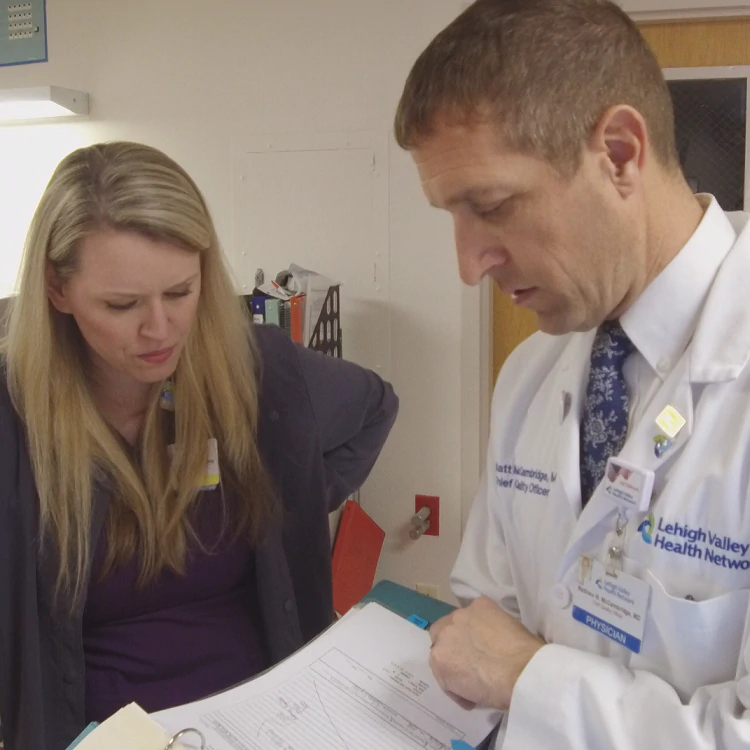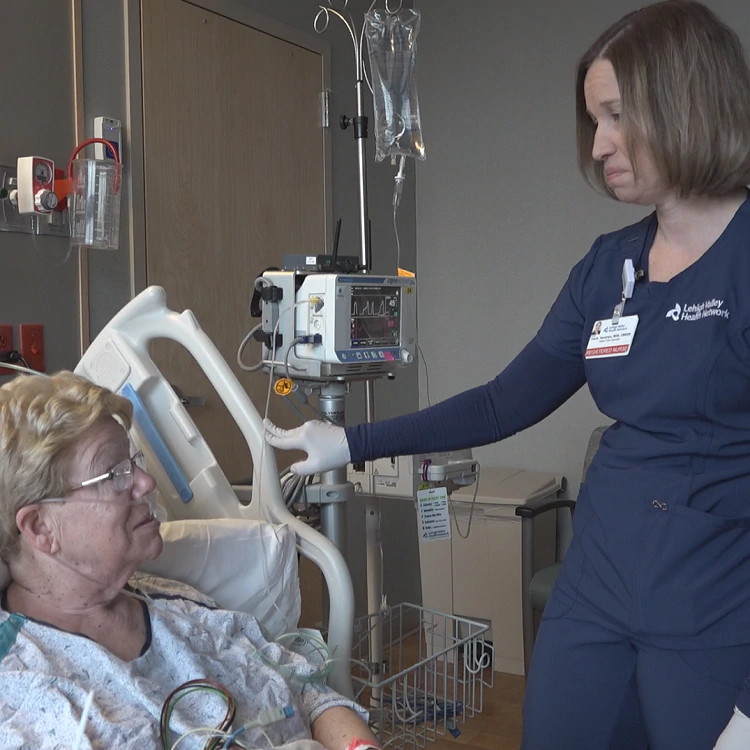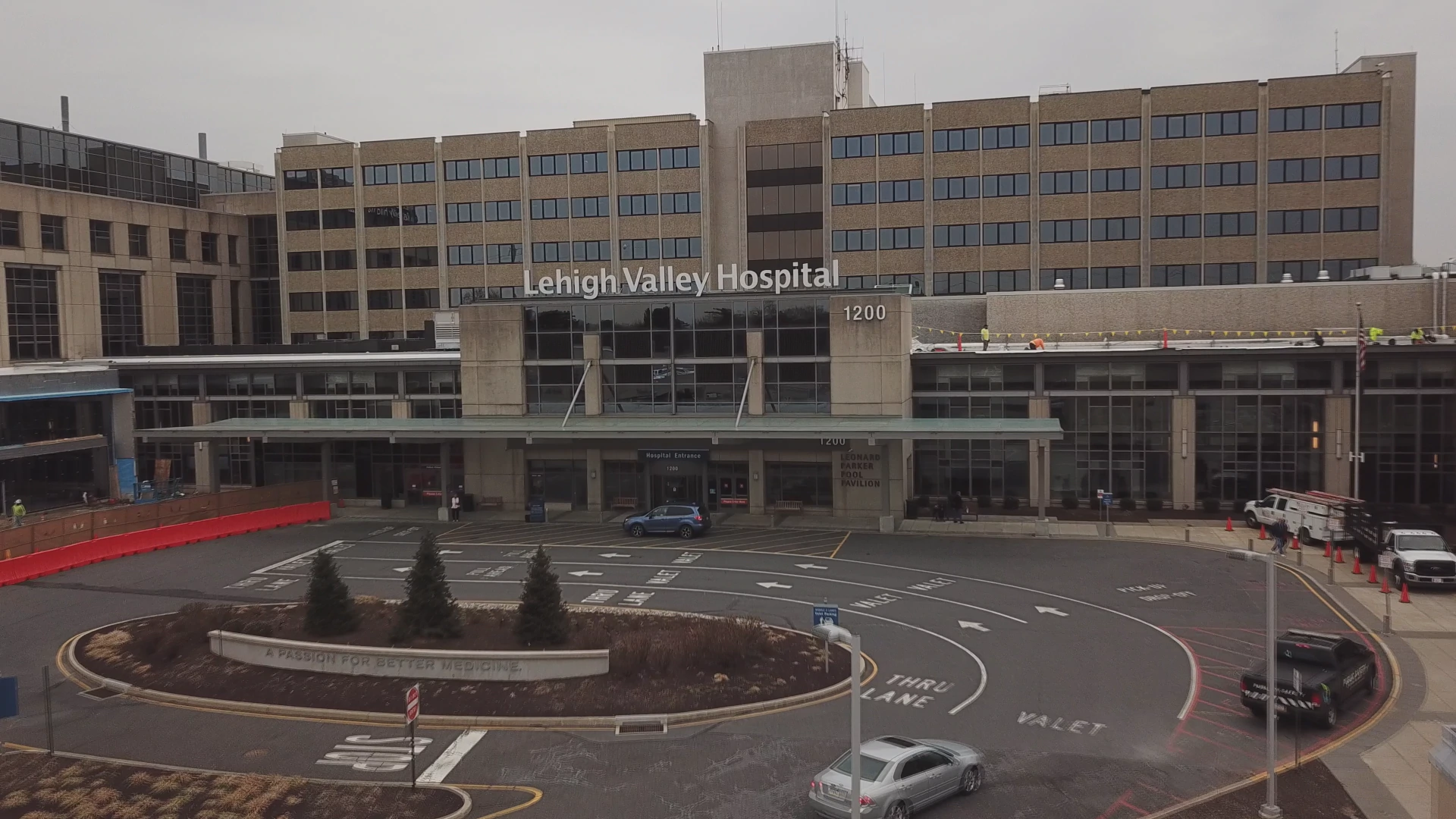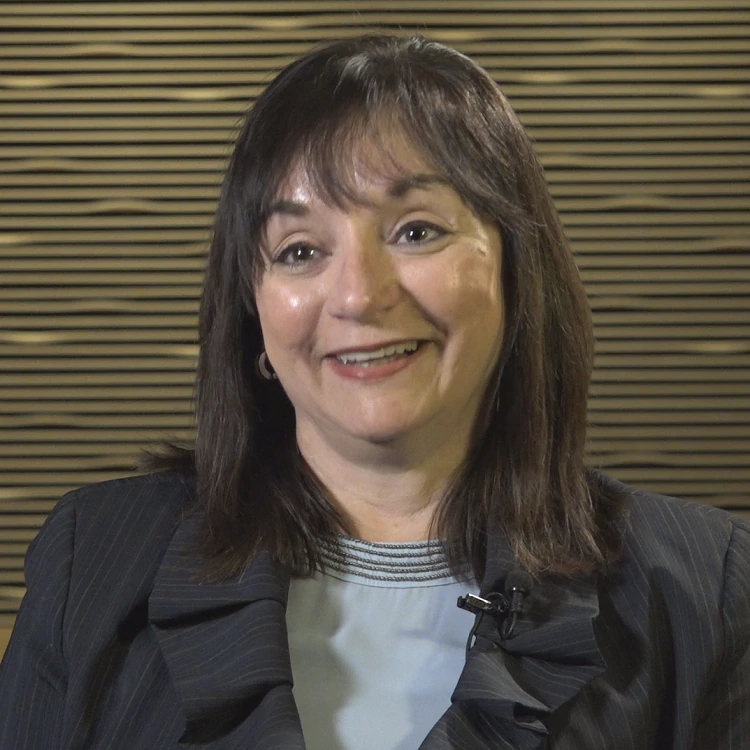Helping Patients - and Hospitals Breathe Easier
Early results are promising for new enhanced respiratory monitoring care pathway.
Allentown, Pa. – It took a year and a lot of difficult work, but the value-based healthcare partnership between Medtronic and Lehigh Valley Health Network (LVHN) has produced something unique.
“We haven’t built anything like it until now,” said Ada Rivera, Administrator of Network Transformation and Strategic Partnerships at LVHN.
“It” is a new data-driven care pathway that identifies patients who need enhanced monitoring of their breathing after surgery or while on opioids and automatically opts them in to receive monitoring. Respiratory monitoring technology helps improve detection of respiratory compromise, but it has to be used with the right patients to have an impact. What sets this new pathway apart from traditional patient interventions is the automated ordering of monitoring for the right patients and the addition of cost data in the pathway.
“I’m not aware of any other organization that is combining clinical, claims and cost data into a care pathway,” said Debbie Salas Lopez, MD, MPH, Chief Transformation Officer at LVHN. “Not only can we see how the care pathway is working for patients, we can also see, for the first time, the impact on cost. That’s a huge achievement."
How It Works
Nationally, it’s estimated that 1 in every 200 hospital patients who receive pain medication after surgery develop breathing problems in the first critical hours after their operation.1 Those complications can sometimes be fatal.2 They’re always expensive — costing hospitals nationwide an average of $26,571 — but often preventable.2 So LVHN and Medtronic set out to leverage technology to not only improve outcomes for patients, but also reduce the cost of care on the healthcare system by avoiding costly complications.
It’s really early, but we think the monitoring tool, plus the work of our doctors and nurses, is taking us to another level in patient safety.
Dr. Matt McCambridge, Chief Quality and Patient Safety Officer at Lehigh Valley Health Network
“Before this we didn’t have a way to constantly and consistently monitor patients who needed enhanced monitoring,” said Tracie Heckman, RN, a patient care specialist at LVHN and a member of the project team. “Now we have a system in place that assigns enhanced monitoring, and also provides us with immediate alerts if a patient is having problems.”
The program deconstructed every step of a patient’s post-surgical journey through the hospital. It also looked at a patient’s journey when they receive opioids for pain management. Then, teams of data experts built the new care pathway.
Using electronic health records, they developed a step-by-step-system of best practices that identifies at-risk patients, groups them into cohorts, and automatically enters them into a monitoring protocol.
“It’s definitely working,” Heckman said.
Patients at higher risk of respiratory compromise now automatically receive capnography in the hours after surgery and while on opioids. Capnography is an early warning monitoring technology that measures exhaled carbon dioxide and immediately pages a nurse if there are breathing problems.
“It shows us exactly how someone’s breathing, every minute,” Heckman said. “We know our patients are safer, and that helps nurses immensely.”
The new approach makes the “judgement call” easier for whether to order capnography and gives doctors and nurses an assignment system based on patient data.
Early Results
Since the new protocols were automated, LVHN is now ordering respiratory monitoring technology for more than 80 percent of at-risk patients. Early results are showing a downward trend in the number of adverse events related to respiratory compromise.
“We are seeing fewer code blues, fewer transfers to the ICU, fewer intubations,” said Dr. Matt McCambridge, chief quality and patient safety officer at LVHN. “It’s really early, but we think the monitor tool, plus the work of our doctors and nurses, is taking us to another level in patient safety.”
The other piece of early information came from the cost analysis, and it’s surprising. “You know what we saw first from the cost data on our Enhanced Respiratory Monitoring program?” Rivera asked. “We are actually losing revenue, because we’re avoiding adverse events. We’re improving outcomes for patients and lowering the total cost of patient care. We’re not making money on this. But it’s patient safety. It’s the right thing to do.”
While LVHN begins discussions with payers to tackle the revenue challenge, teams from Medtronic and Lehigh Valley Health Network are now using the Enhanced Respiratory Monitoring blueprint to create at least three other care pathways. The goal is the same — looking for new ways to help patients and lower costs — by leveraging the value of technology.
References
1 Fredricksen, TW & Lambrecht, JE. (2018). Using the 2018 Guidelines from the Joint Commission to Kickstart Your Hospital’s Program to Reduce Opioid-Induced Ventilatory Impairment. APSF Newsletter, volume 33 (number 1). Page 1 & 8-10.
2 Melamed et al. Perioperative Medicine (2016) 5:19 DOI 10.1186/s13741-016-0044-1. Postoperative respiratory failure necessitating transfer to the intensive care unit in orthopedic surgery patients: risk factors, costs, and outcomes.



